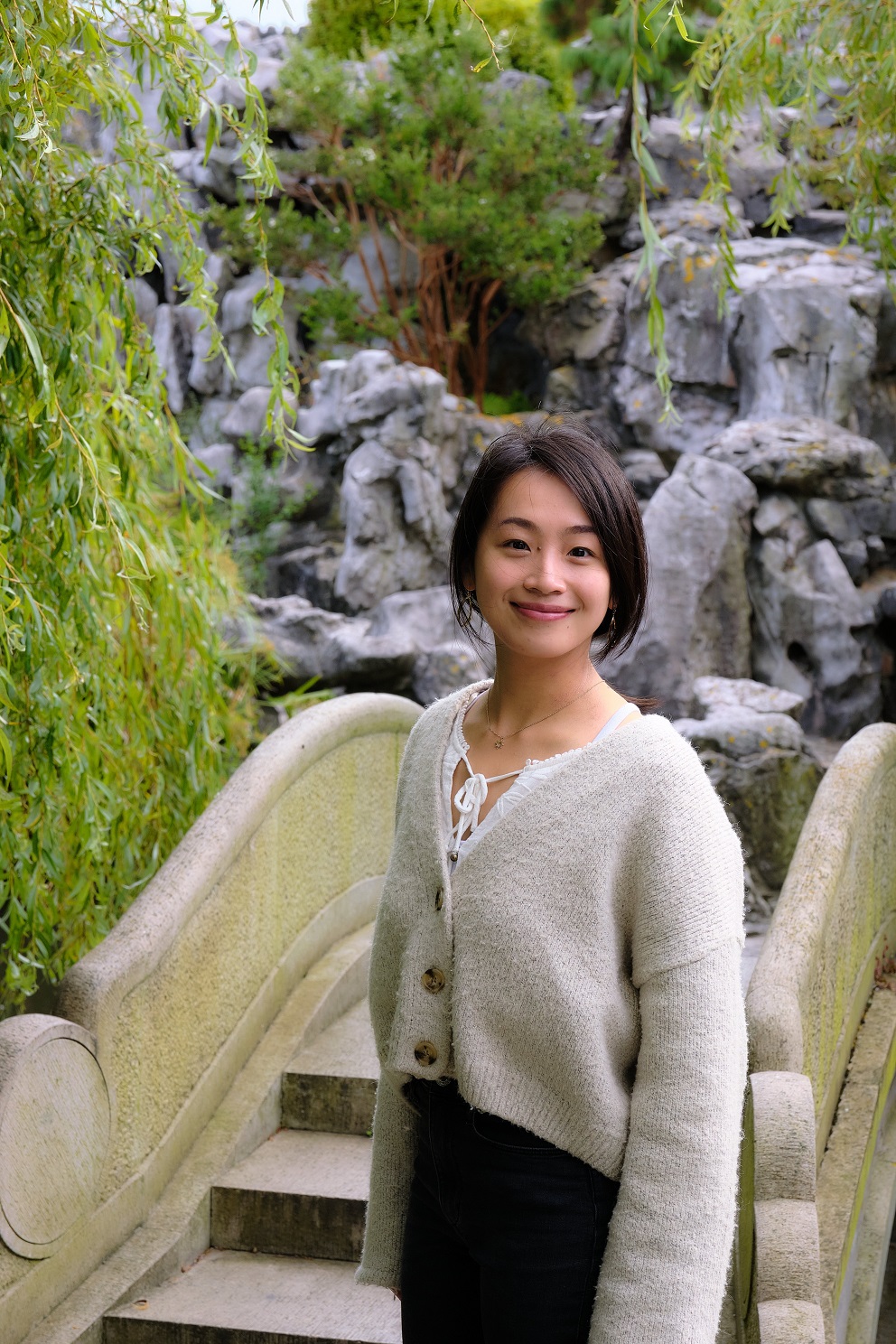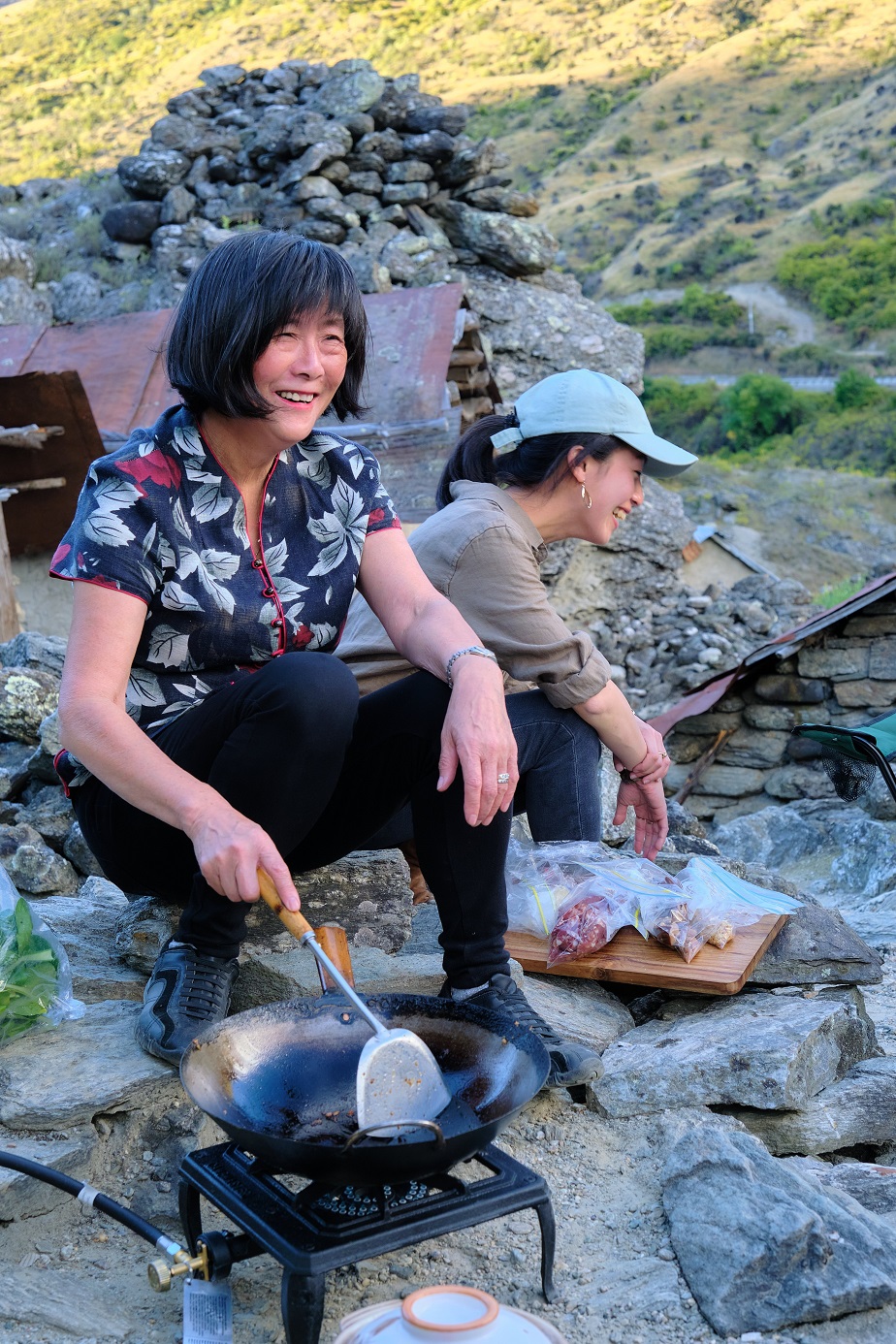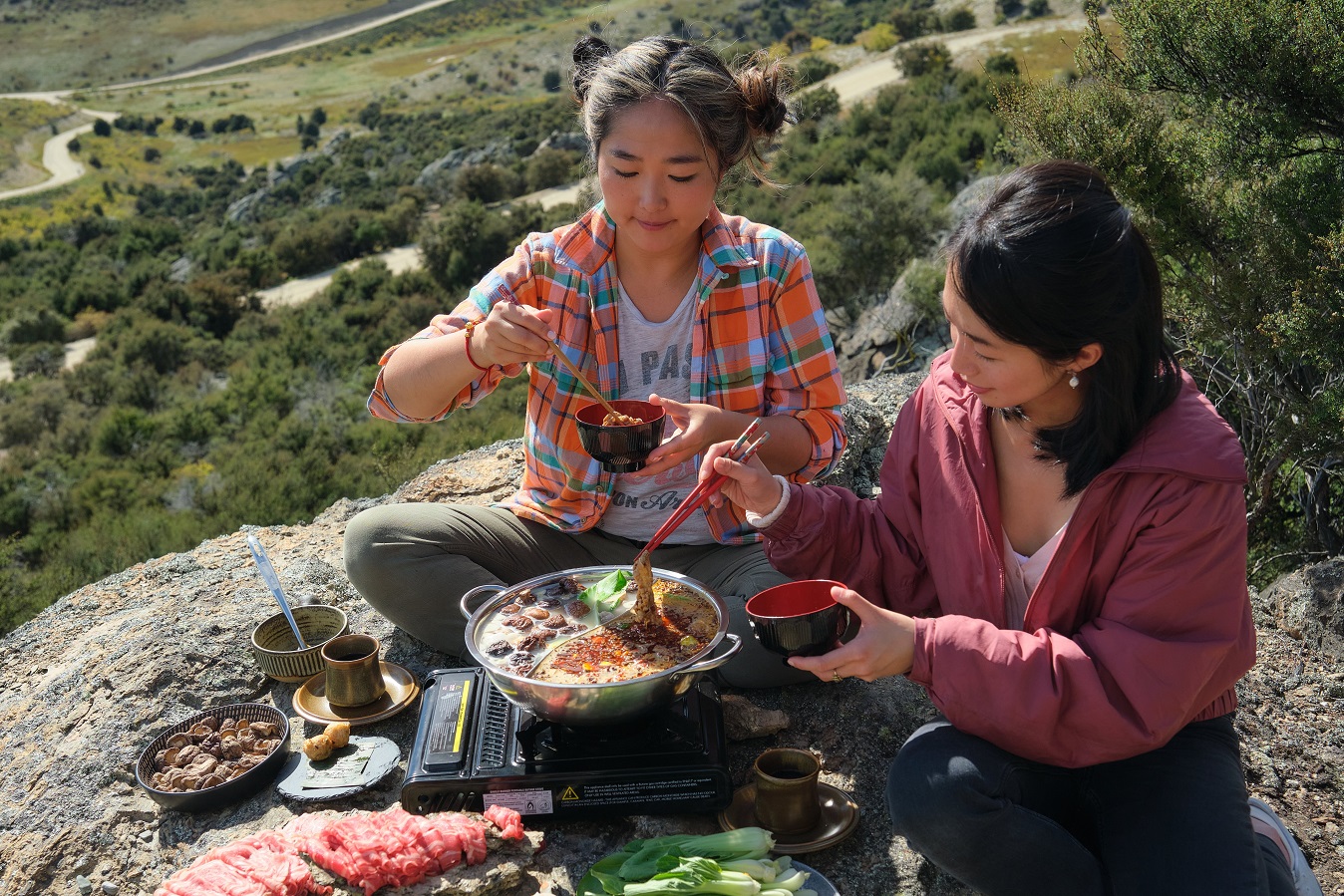
Watching claypot chicken being cooked among the old Chinese goldmining village huts, Janice ChiFen Huang began to appreciate how tough life was for the early Chinese immigrants to Otago.
As the flame on the gas cooking stove kept going out, empathy for those immigrants who would have been cooking over flames often in much worse weather increased.
Jean Lai, a descendent of those migrants, persevered, cooking the dish she had been served by her parents and telling stories of their lives.
"Life wasn’t easy for them," Huang says.
It was just one of many experiences Huang had which opened her eyes to the journey of those early immigrants as part of a new television series Sik Fan Lah!, which tells the stories of modern Kiwi-Chinese life through food.
Huang learnt from Lai how difficult it was to get many of the specialised Chinese ingredients or spices those immigrants needed to make their traditional dishes back then such as Lai’s parents being able to get the Sichuan pepper from their home region.
"I tasted her food, heard her stories, it was very family orientated."

"It’s an unusual subject for people from Taiwan to take but I really wanted to get involved in wildlife conservation especially within the marine coastal area — I grew up in Taiwan which is literary a beautiful island surrounded by ocean but not many Asian people study it."
Learning the migration story of the older generation who came to Otago during the Gold Rush years has been special as was meeting their descendants .
"I felt quite privileged to be chosen to be part of the TV series. I feel sometimes there is a gap between the earlier migrants and recent migrants and it’s cool to be able to have this bridge crossed."
It means she has been able to compare her experience as a recent migrant, who has a love of surfing and tramping, with those who came to Otago during the Gold Rush years and their descendants who call the region home.
"It was an eye-opening experience for me. I got to meet all these amazing people."
She had her first go at gold panning in Central Otago and her first game of mahjong at Dunedin’s Chinese Garden.
"I learnt a lot."

"I speak English and Mandarin. Despite all of the slight differences we have similar values around the food we eat and the Lunar New Year we celebrate."
Family is also at the centre of their food sharing, something Huang can really appreciate having just returned from her first visit back home to Taiwan since before the Covid-19 pandemic.
Being able to spend time with family, especially her grandmother who is in her 90s and share food with them at Chinese New Year was very special.
"It’s all about food. Whenever anyone has food you instantly want to share it with people. "
She had been craving her homeland’s specialty beef noodle soup and Jiaozi fried dumplings, a common Taiwanese street food.
"I think I’ve literally had them six times since I’ve been back. It’s those simple foods I miss the most."
Sik Fan Lah! writer/director/editor Jack Woon, who used to live in Dunedin and work for Natural History New Zealand, says the series developed from an idea producer Jess Wong had when sitting at the table with her grandparents one day about how people learn about culture through food.
"My upbringing was centred around food," she says.

It features six different Chinese-Kiwi hosts, including Masterchef 2022 and barista champion Sam Low, in different parts of the country seeking out stories and classic dishes.
Woon says he was really grateful to those from Dunedin’s Chinese community such as Denise Ng, daughter of historian James Ng, Duncan Sew Hoy and Malcolm Wong for being open to taking part and talking to Huang about their families’ experiences.
He is proud of the series as it is the first to really show a Kiwi-Chinese food story.
"It’s the best thing I’ve ever done. It’s the first time I’ve been able to make a story about my people and my story," he said.
Having grown up in New Zealand in the 1990s, Woon says many Kiwi-Chinese felt they had to "be invisible, be Kiwi" and it has only been in the past five or so years they have realised the strengths they bring as Kiwi-Chinese.
"We have a lot to offer and this show celebrates how far we have come."
TO SEE
Sik Fan Lah! begins on TVNZ 1, February 12 at 10am and the Otago episode is on March 5.
 Claypot Rice bao zi fan
Claypot Rice bao zi fan

Featured in Sik Fan Lah!, cooked by Jean Lai, Claypot rice is a classic dish that was eaten by Chinese gold miners, which can easily be made at home. The fragrance of the lap cheong steam cooked on top of the rice and the rendered pork fat from the sausage makes it irresistible. Accompany with a side of cooked Chinese greens such as gai laan or bok choy for the best home-style meal you’ll want on repeat.
Serves 2
1 cup Jasmine rice
1½ cups water
3 boneless chicken thigh fillets
3 Tbsp Lee Kum Kee light soy
2 Tbsp oyster sauce
6 slices fresh ginger, shredded finely
2 cloves crushed garlic
2 Tbsp Shaoxing wine
Few grinds of black pepper or Sichuan peppercorns
½ tsp sugar
2 tsp cornflour
8 dried shiitake mushrooms, rehydrated in hot water
1 Tbsp vegetable oil
2 Chinese lap cheong sausages
1 spring onion, sliced diagonally
Sesame oil (optional)
Method
Wash the rice to remove excess starch and until the water runs clear, drain well. Place into the claypot or lidded casserole with the water and leave to soak for 30 minutes to 1 hour.
Slice the chicken thighs into 2cm strips and place in a bowl with the sauces, ginger, garlic, wine, seasonings and cornflour. Mix until combined and marinate for 5-10 minutes. Remove the stems from the rehydrated mushrooms and slice. Heat the oil in a wok or frying pan and stir-fry the chicken and mushrooms until the chicken is cooked and mushrooms lightly browned. Set the pan aside.
Bring the rice to a boil and then turn the heat down to medium. Place the Chinese lap cheong sausages on top of the rice and continue cooking until the water has been absorbed and “craters of the moon” appear on the surface. Cover with the claypot lid and reduce the temperature to low heat and continue to steam cook for a further 15-20 minutes until the rice is tender and fragrant with the juices from the sausages. Remove the sausages and slice thinly on the diagonal.
Spoon the chicken and mushrooms over the top of the rice. Arrange the sliced Chinese sausages to one side of the claypot. Replace the lid and allow the chicken to heat through for about 10 minutes. To serve, sprinkle with the spring onions and drizzle with a little sesame oil if desired. Using chopsticks mix all the ingredients evenly through the rice.
Note: if you have more than one claypot or smaller individual claypots, you can provide each diner with their own and allow them to mix the ingredients through the rice themselves. Place some vegetables to one side of the pot. A fried egg with a runny centre placed on top with a drizzle of light soy is also delicious!
- By Jennifer Yee Collinson
Instagram: @culinaryjourneys












